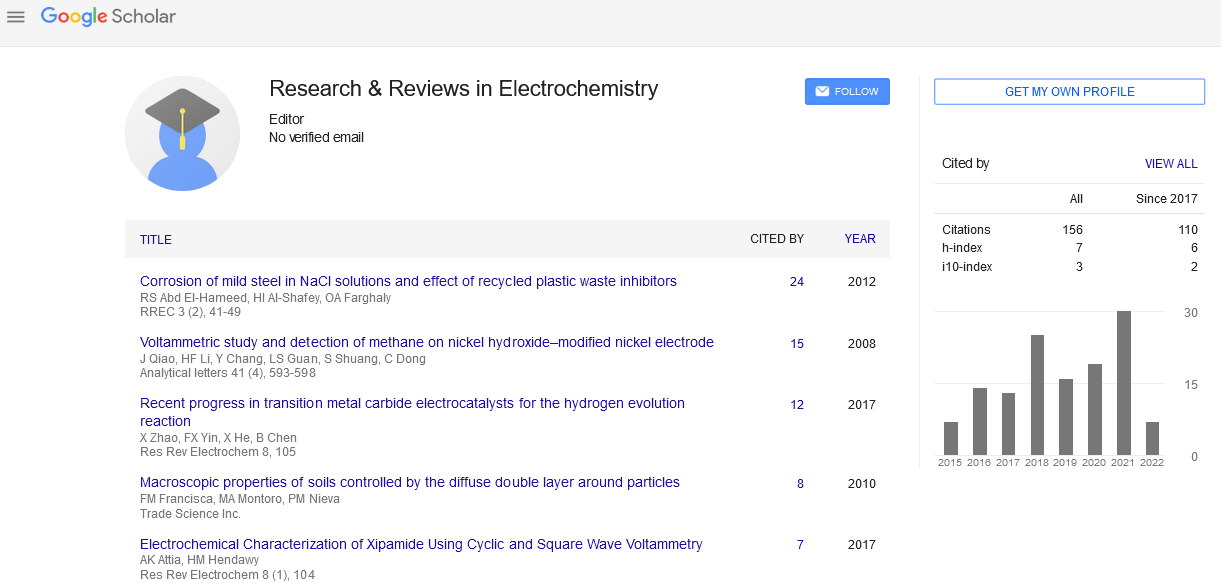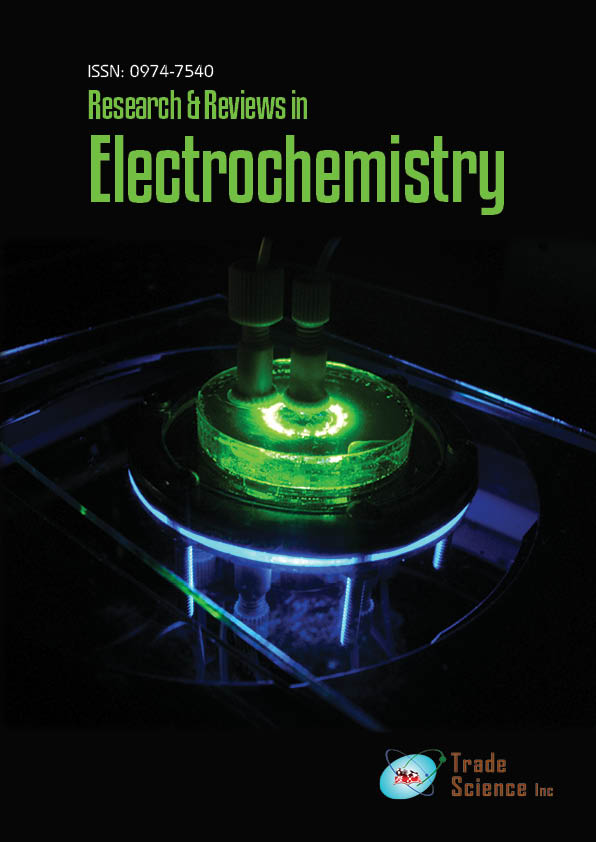Short communication
, Volume: 11( 1)Layered Transition Metal Selenophosphites for Visible Light Photoelectrochemical Production of Hydrogen
- *Correspondence:
- Sunny Goswami
Department of Chemistry, 57 Ullswater Avenue West End Southampton Hampshire UKS018 3QS
E-mail: publisher@tsijournals.com
Received: March 15, 2021 Accepted: March 27, 2021; Published: March 30, 2021
Abstract
Global energy use is increasing, posing severe threats to environmental protection and energy sources. Introduction of clean and sustainable energy sources, such as photo electrochemical hydrogen fuel production, is a possible answer. 2D materials, such as transition metal trichalcogenphosphites (MPCh3), are gaining more and more interest for their potential as photocatalysts. Transition metal selenophosphites, such as MnPSe3, FePSe3, and ZnPSe3, have been investigated as photo catalysts for the Hydrogen Evolution Reaction (HER). During photocurrent studies in acidic environments, ZnPSe3 showed the lowest overpotential and the highest responsiveness to light.Keywords
2D materials; Photoelectrocatalyst; Hydrogen evolution exfoliation
Introduction
The development of carbon-free fuels, such as hydrogen from water, is at the forefront of research to limit dangerous chemical emissions into the atmosphere. Water splitting to hydrogen can be done directly with solar light energy, although direct photochemical water splitting yields are low, Alternatively, solar energy can be turned to electricity using solar panels, and then used to split water using electro catalysts such as Pt or transition metal dichalcogenides. Photo electrochemical water splitting, which combines the best of both methodologies, combines the best of both-electrocatalytical water splitting with the help of photons. Starting with mono-element compounds, such as graphene, and progressing to more complex compounds, such as transition metal dichalcogenides, the scientific community began to concentrate on the study of these materials' extraordinary features and potential applications. The unique structure of 2D materials is a frequent feature: in their bulk form, they have stacked layers, one on top of the other. The in-plane connections are strong, while the interactions between the layers are weaker, allowing for the exfoliation or delamination of single or few layers. Among the rediscovered 2D materials, transition-metal trichalcogenphosphites (MPCh3) are gaining more and more interest in particular due to their catalytic properties in the hydrogen evolution reaction.Their structure is formed from the structural types of CdI2 and CdCl2, and it takes on a monoclinic or rhombohedral lattice configuration. Only compounds containing Sulphur or selenium can include the Chalcogen atom (Ch). Hydrogen production via photocatalytic water splitting is a viable alternative to the use of fossil fuels, since it provides a clean source of energy that aids in the resolution of our society's significant environmental issues.
Crystals MPSe3, i.e. MnPSe3, FePSe3, and ZnPSe3, were purchased from XFNANO, Screen printed carbon electrodes (SPCE, SE) were obtained from CH Instruments, Inc. and Indium-Tin-Oxide (ITO) coated Poly Ethylene Terephthalate (PET) from Sigma Aldrich. Conductive carbon cement EM-Tec C38 was obtained from Micro to Nano. Potassium Hexa Cyanoferrate (III) (99%) and Potassium Chloride (analytical grade) were purchased from Merck. Sulfuric acid 96% was obtained from Penta, Czech Republic Morphological characterization of the crystals was carried out using a scanning electron microscope (SEM) TESCAN LYRA3 with an accelerating voltage of 10 kV. The elemental analysis was obtained from energy-dispersive X-ray spectroscopy.In conclusion, transition-metal selenophosphites crystals, MnPSe3, FePSe3, and ZnPSe3, were examined and their efficacy as photoelectrocatalysts for the hydrogen evolution reaction was assessed.

